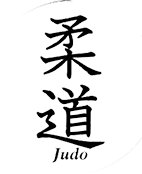HI,NBK wrote:In the koryu jujutsu I study the two hand control is done usually with the objectives of controlling Tori's access to a weapon in preparation for binding or assassination by a third party. Some of the scenarios include two or more attackers. I just assume this a truncated vestige of a more elaborate scenario.wdax wrote:With regards to Kime-no-Kata:Hanon wrote:(...) Cold hard questions. (...)
What´s the logic in Kime-no-Kata to grip both hands and why should it not make sense 40-50 years later?
But the most interesting questions IMHO are:
- Why 1952? What was the historical context of the years 1951-1953 for Japan, Judo and japanese Judo?
- Why did they want an alternative to the use of katana after WWII? What was the educational context of the usage of Katana until 1945 after carrying of Katana was forbidden in 1877? Why did schoolboys learn to defend against katana during wartime (official judo-curriculum for schools)? What was the educational purpose of this?
I'd like to hear the thoughts on the latter questions.
NBK
I agree with "In the koryu jujutsu I study the two hand control is done usually with the objectives of controlling Tori's access to a weapon"
This is how I understand the use of ryote dori in certain circumstances. There are other reasons also. It does not conform to the principle of maximum efficiency with minimum effort though in the physical nor mental sense.
"In preparation for binding or assassination by a third party. Some of the scenarios include two or more attackers." I don't understand what you write? If you can extrapolate I may better offer some sort of opinion.
In general and not in response to NBK.
I have read and re read several times this and the original thread. I have made several early, I hope, temporary conclusions. One that springs to mind is there are an awful lot more questions to the practice of KGJ than answers and it 'appears' the answering of a question is responded to by a further question?
Mike



